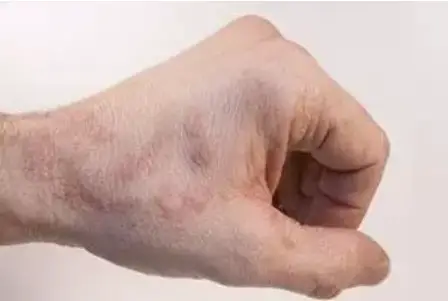Pigment disorders: different forms
Pigment disorders: different forms

No matter if age spots, pimples, melasma or freckles: Hyperpigmentation (or pigmentation disorder) is always mentioned when the color pigments of the skin are distributed unevenly or occur in large numbers in certain areas. Pigment disorders can occur for a variety of reasons, for example as a result of a disease or a predisposition. Here you will learn more about the essential differences and the characteristics of different forms of pigment disorders.
Features
What is a pigment disorder?
A pigment disorder is always present when the formation of the color pigments in the skin is disturbed and results in an uneven skin appearance
Melanocytes are located in the basal layer (the stratum basale) of the epidermis and hair follicles – they form the brownish-black pigment melanin, which is stored in the keratinocytes (it lies there protectively over the cell nucleus). The color pigment is responsible for the colour of the skin, hair and eyes. It protects the skin from the penetration of harmful UV rays and normally the melanin-supplied cells give the skin an even pigmentation. The skin appears evenly coloured. However, it can happen that too much pigment is formed or that formed pigment is distributed unevenly.
Melanin overproduction is visible on the skin as a flat, light brown to black spot of various shapes and sizes.
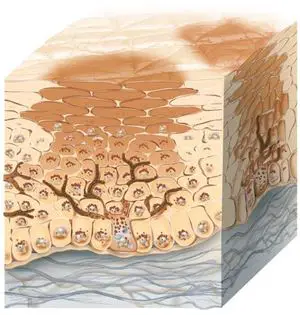
What are the possible causes of a pigment disorder?
A pigment disorder can have very different causes. Both internal and external factors can be involved. Internal influences are, for example, a hereditary disposition, as with freckles. Pigment spots are primarily caused by sunlight. This effect can be enhanced by:
- hormonal changes (e.g. birth control pill or pregnancy),
- many medicines,
- the healing of an inflammatory skin disease, such as acne
- aesthetic procedures, such as chemical peeling or laser treatment.
- Good make-up is certainly the easiest way to make disturbing pigmentation spots invisible – but not every skin can tolerate concealing make-up.
Different forms of hyperpigmentation
Hyperpigmentations can be congenital or develop only in the course of life. Freckles, for example, are congenital and are aggravated by sunlight (hence the fading in winter and reappearing in spring). They therefore occur more frequently in places that are more exposed to the sun. Age spots, on the other hand, represent an accumulation of pigment. Due to the age-related reduced metabolism, these are barely visibly broken down again.
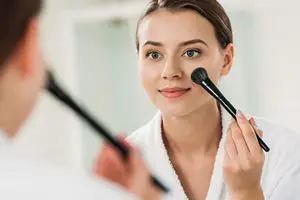
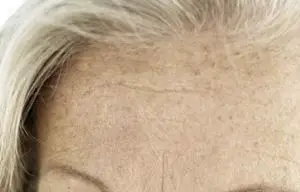
Birthmarks And Moles
Moles and liver spots are usually so-called “melanocytic nevi”. The predisposition to these (also called “beauty spots”) accumulations of pigment-rich cells is often inherited and then occurs in families in the same area of skin.
Moles are assumed to be a possible precursor stage of malignant melanoma (black skin cancer). And for children, the number of UV-induced benign nevi acquired in early childhood (0-6 years) is a significant (if not the main) risk factor for the development of skin cancer. Those marks should therefore be retained in their original form so that they can be subjected to regular dermatological checks. This way you can detect suspicious moles and birthmarks.
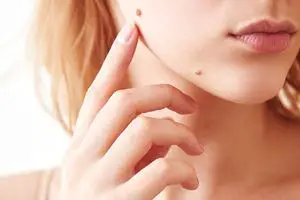
Moles and liver spots are the same. Whether someone is more or less inclined to do so is usually a question of family predisposition.


Freckles
Freckles are mainly caused by sunlight and their colour intensity is intensified. The predisposition is hereditary and the cause lies in the alteration of a certain gene, which reduces the production of the dark pigment eumelanin. As a result, the pigment phaeomelanin, a reddish dye that also leads to the formation of freckles, develops more under the sun. This way you can treat and reduce your freckles.

Freckles occur mainly in people of Nordic origin, who generally have very sun-sensitive skin.
Other pigmentation disorders
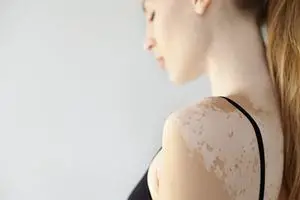
Treatment options
How can pigment spots be treated?
There is a whole range of different ways to have disturbing pigmentation removed – from cosmetic skin care products and chemical peelings to IPL and laser technologies. And of course you can also help a little with make-up and makeup. Here we present different therapies against pigmentation marks and sun spots.

Pigment spots can often be reduced with the help of special skin care products.
Very important: If the size, shape or color of a pigmentation mark changes, itches or bleeds, you should consult a dermatologist to rule out a malignant form.


